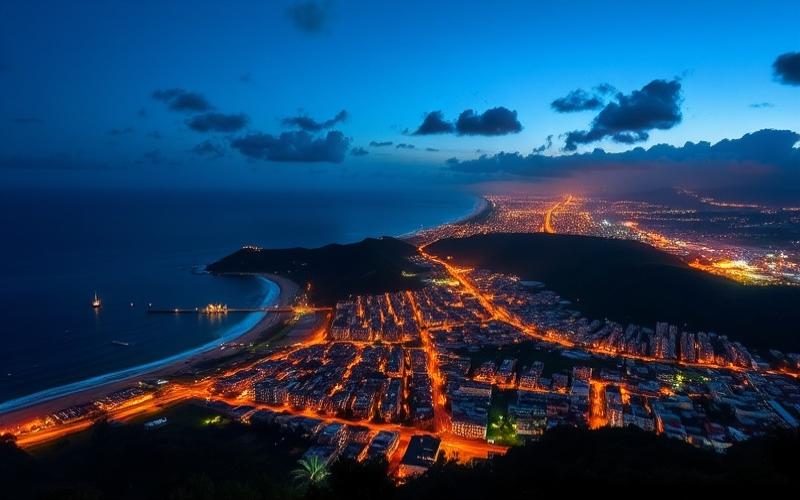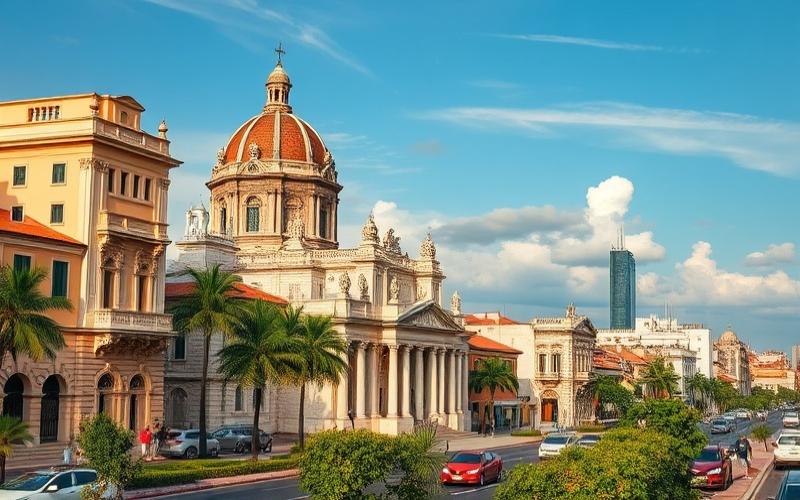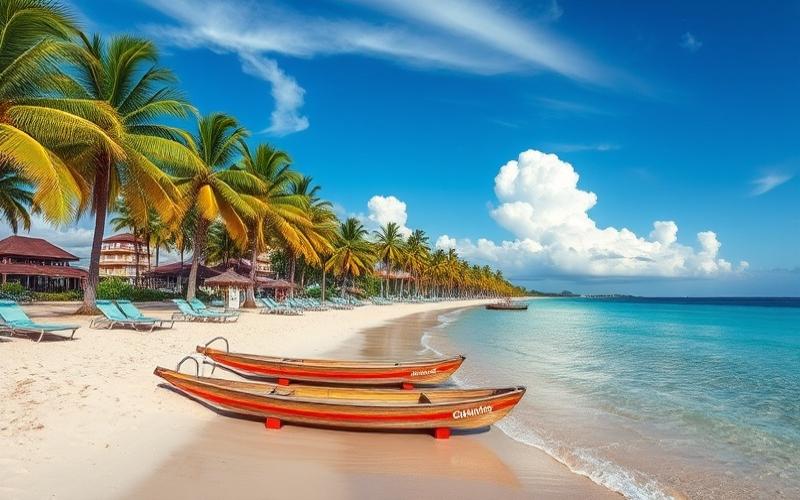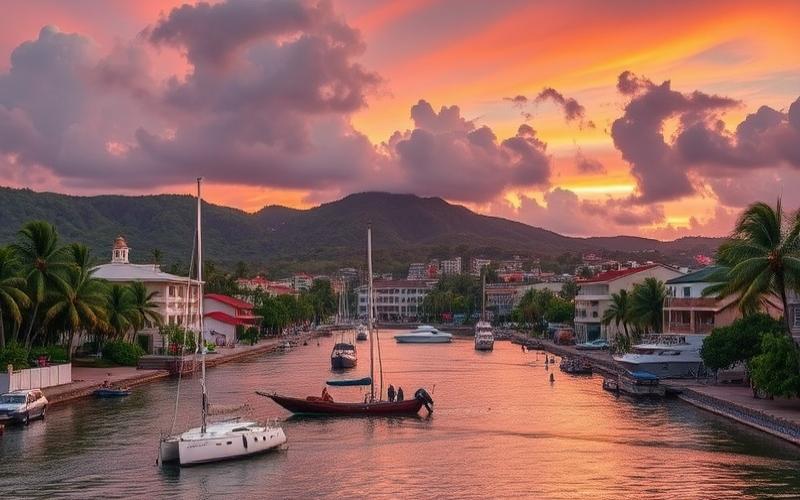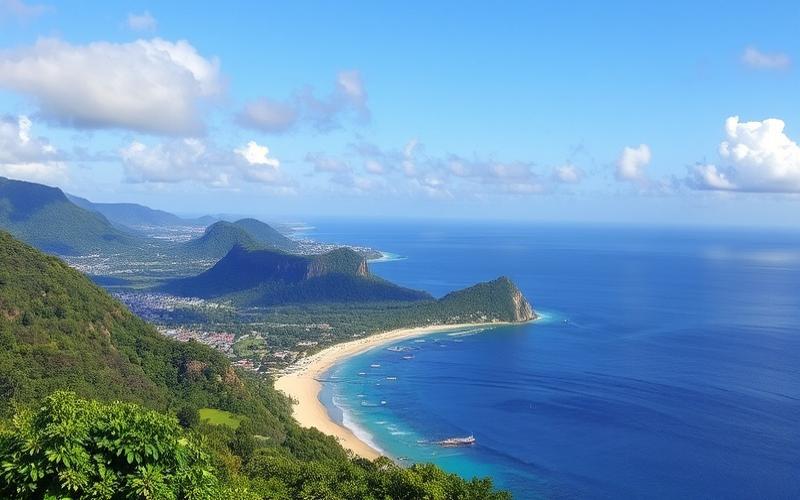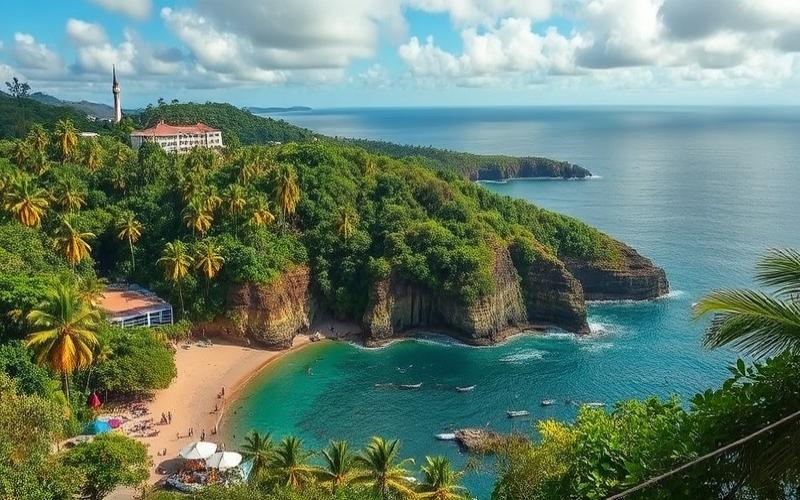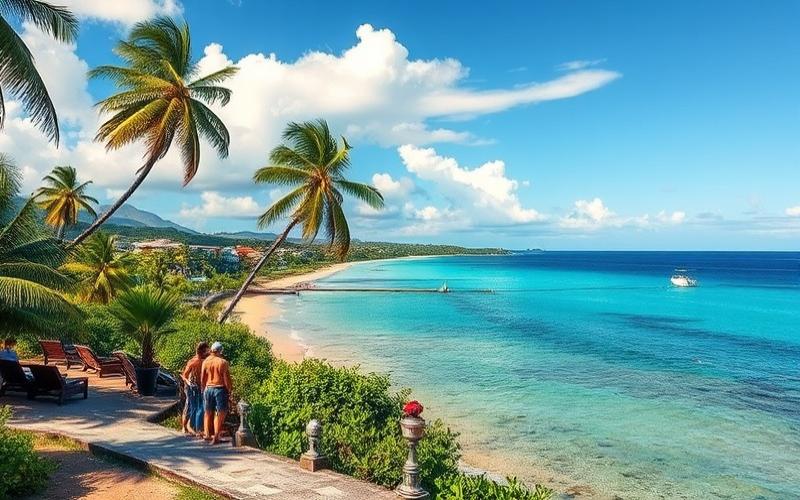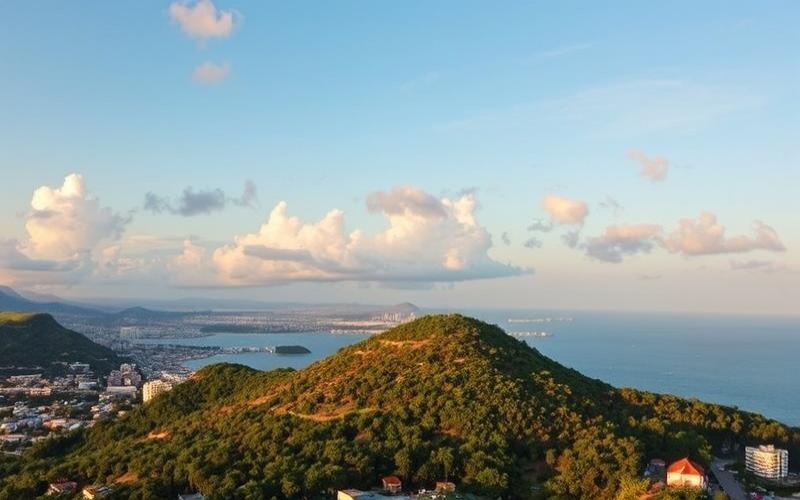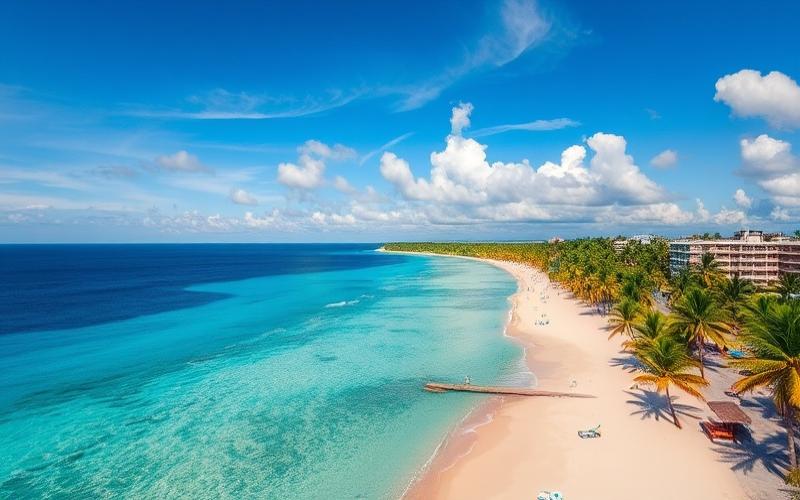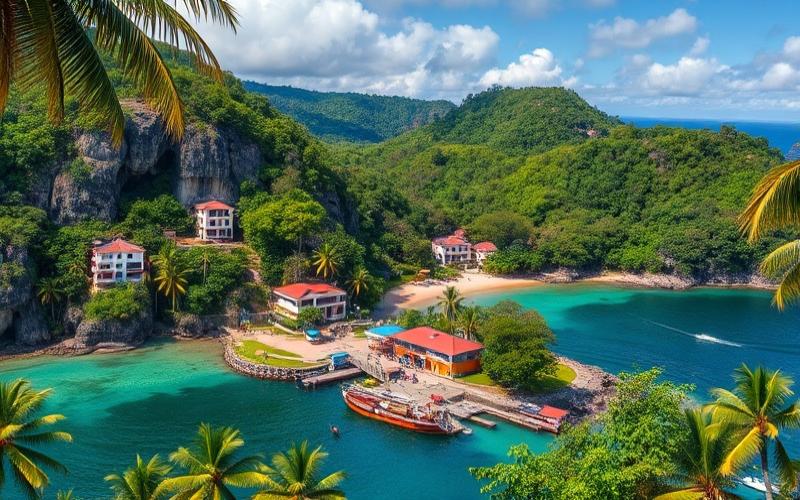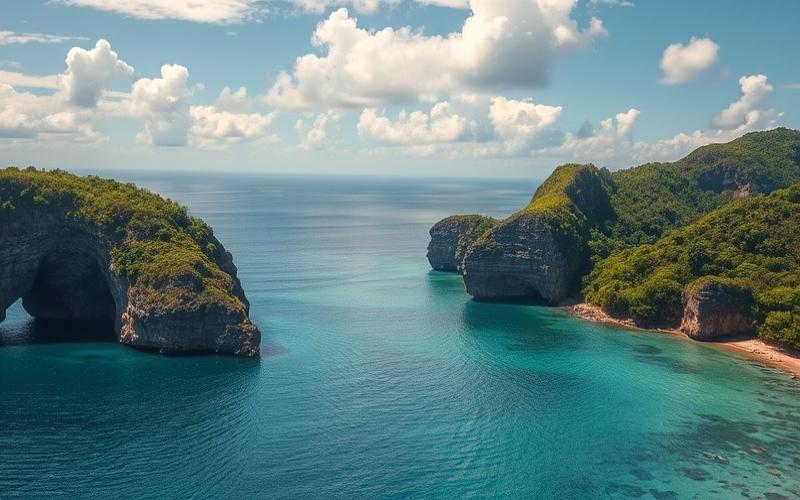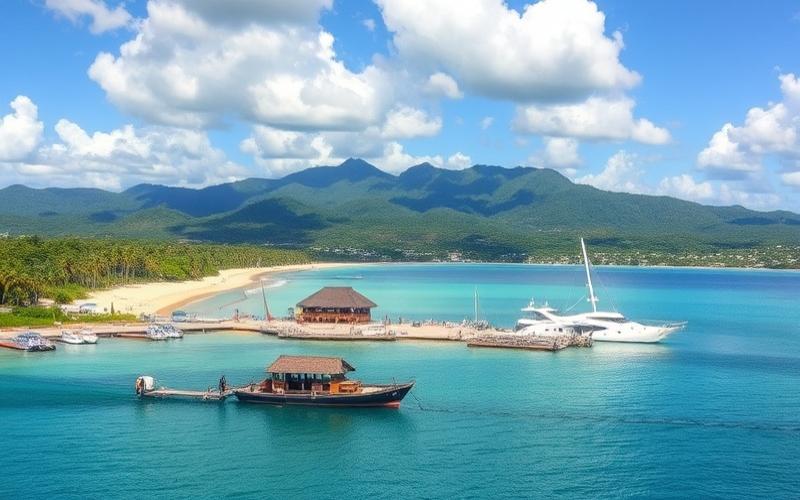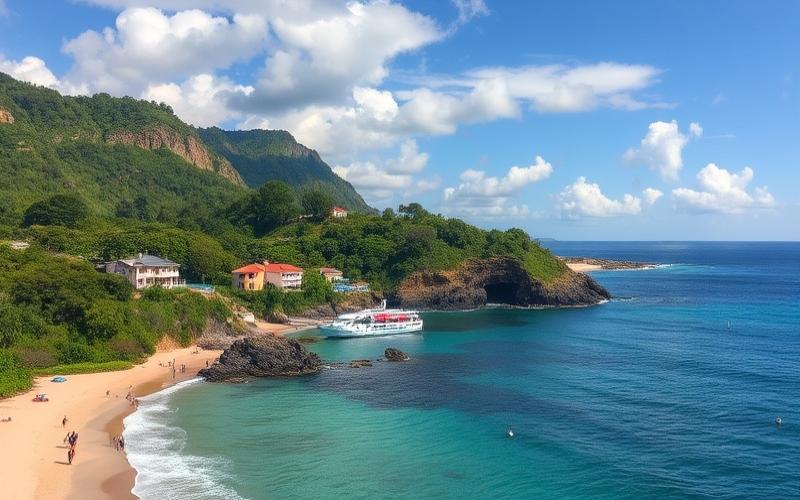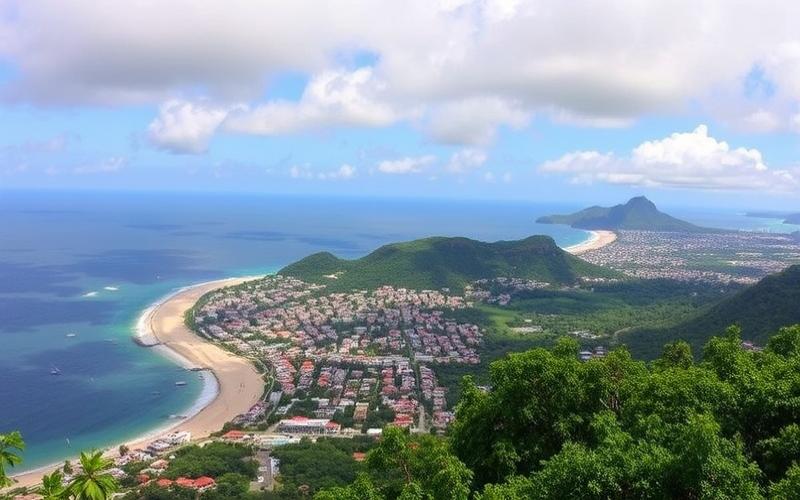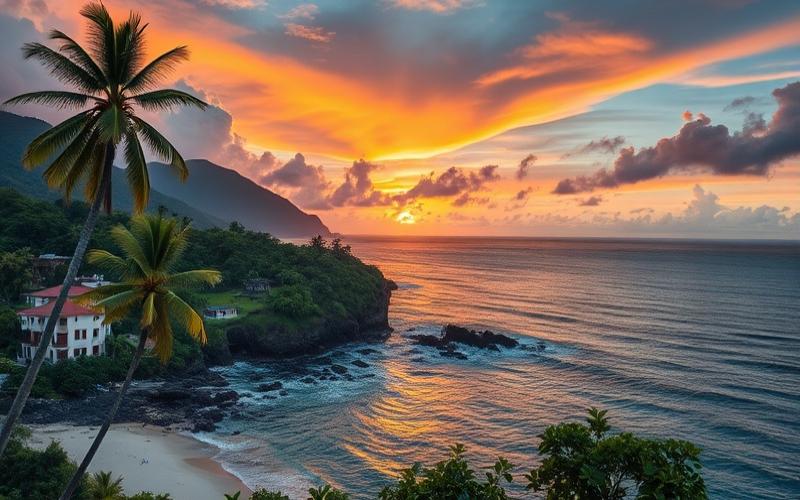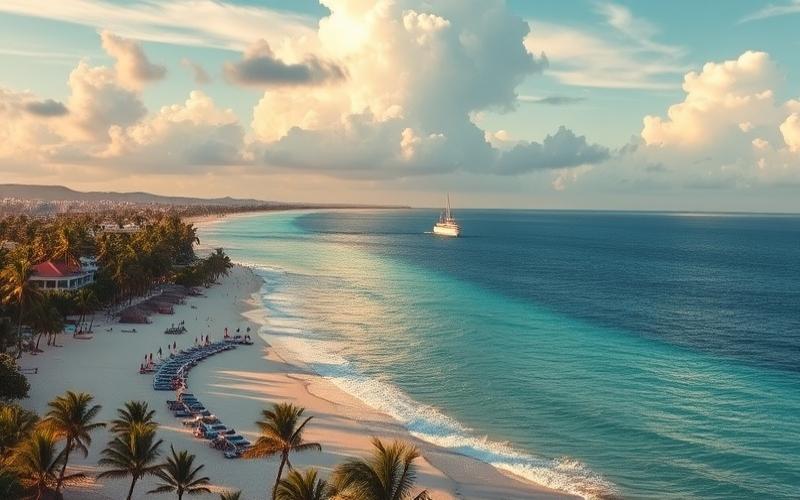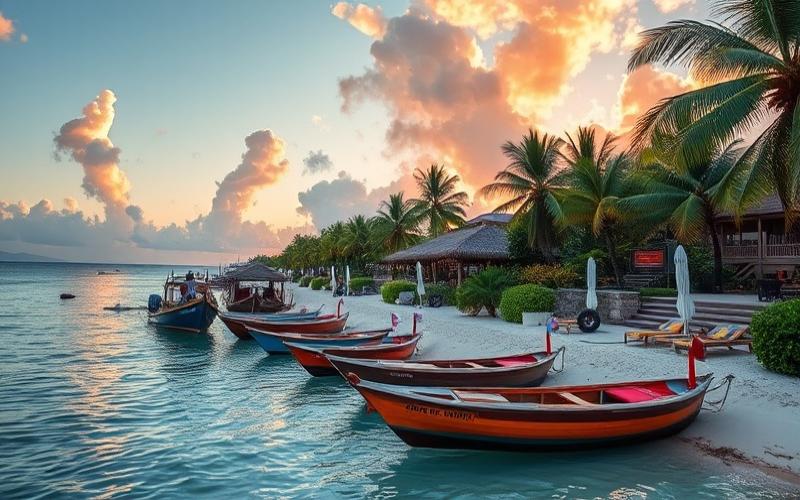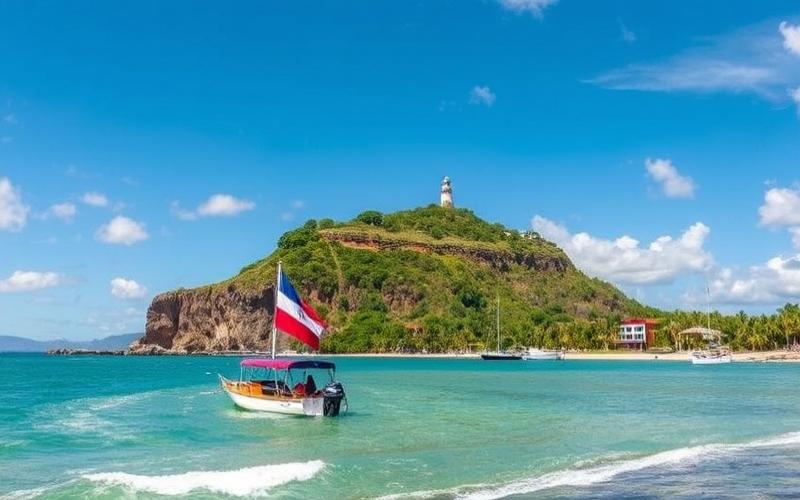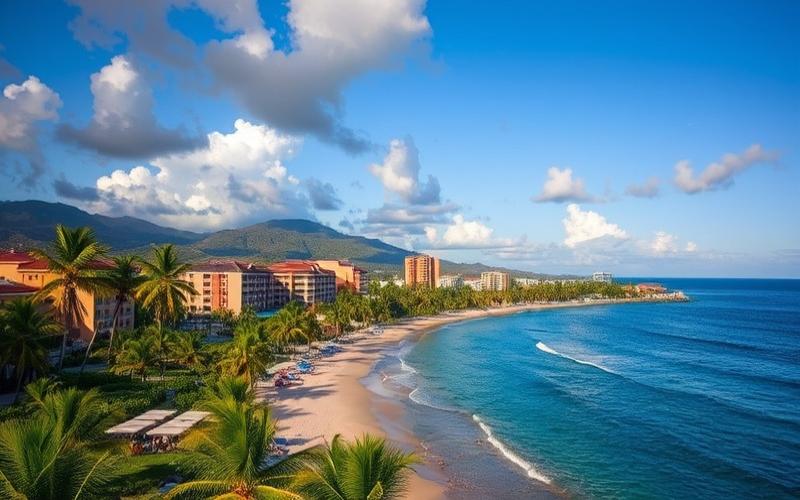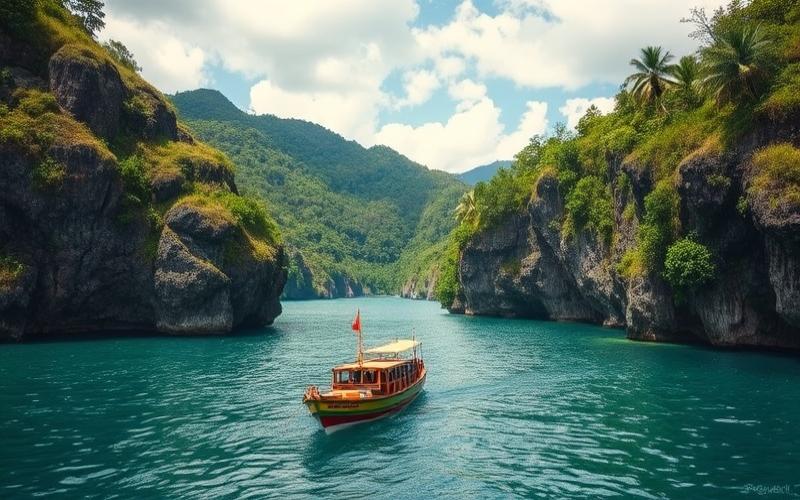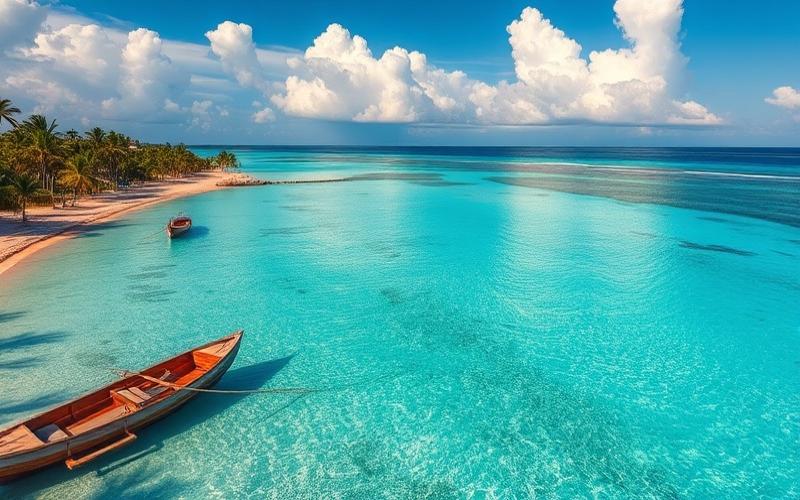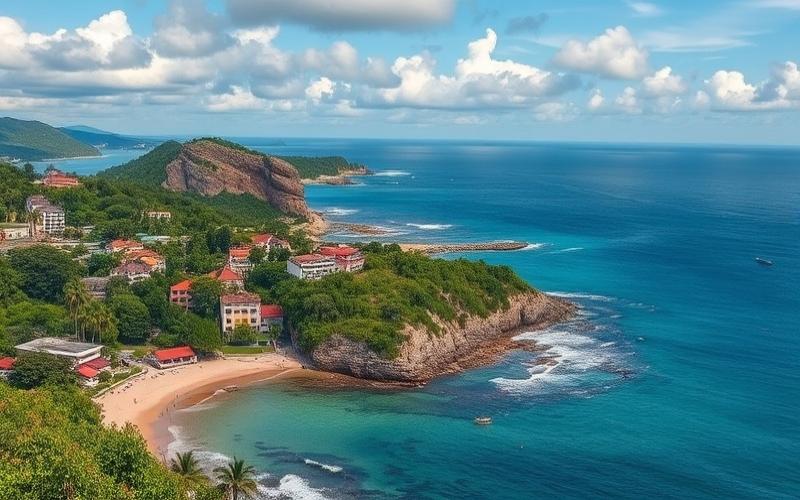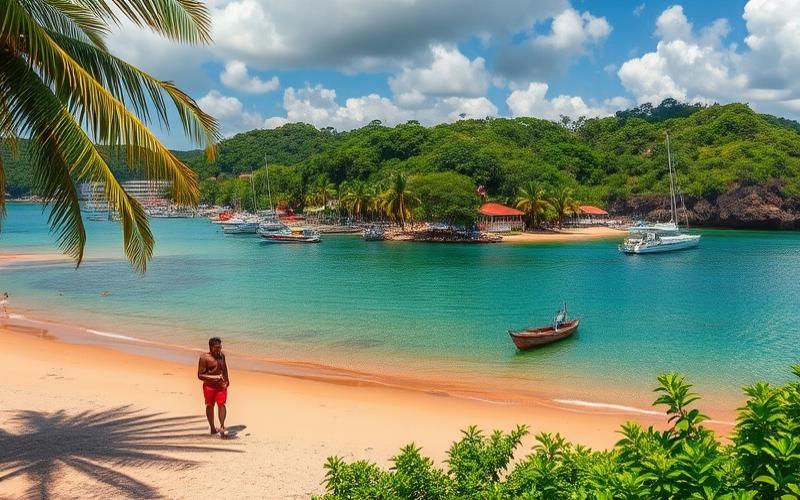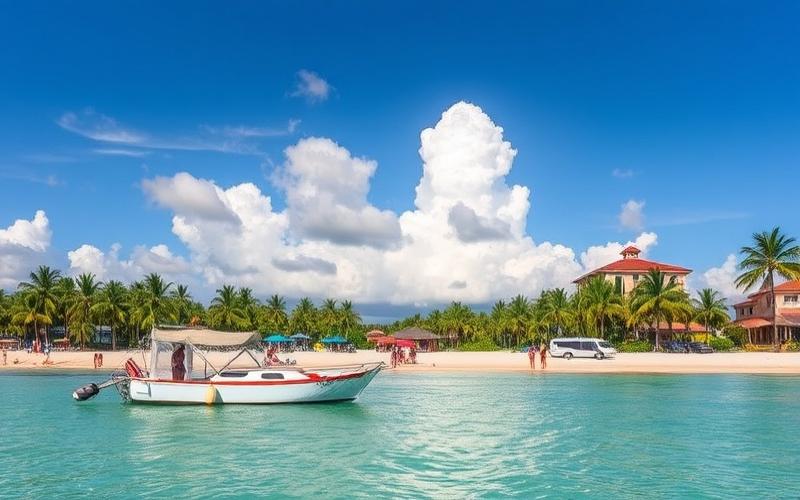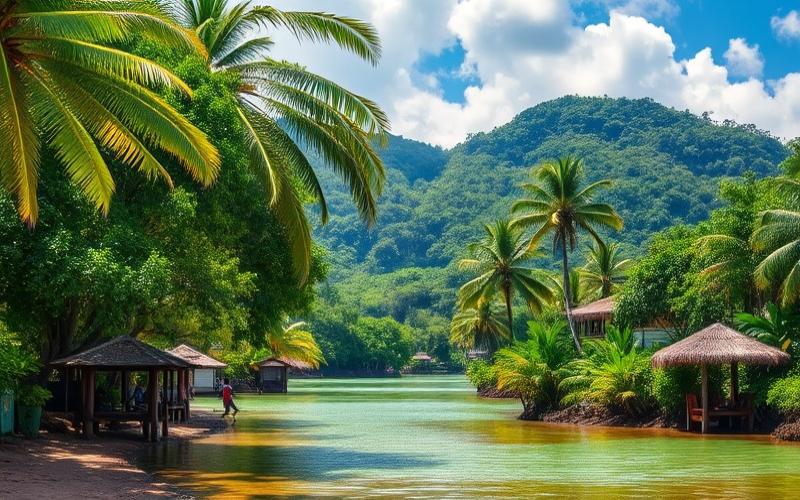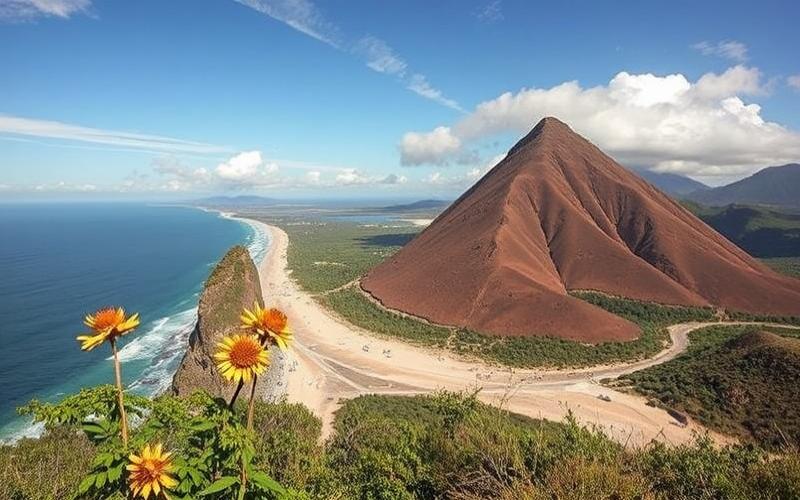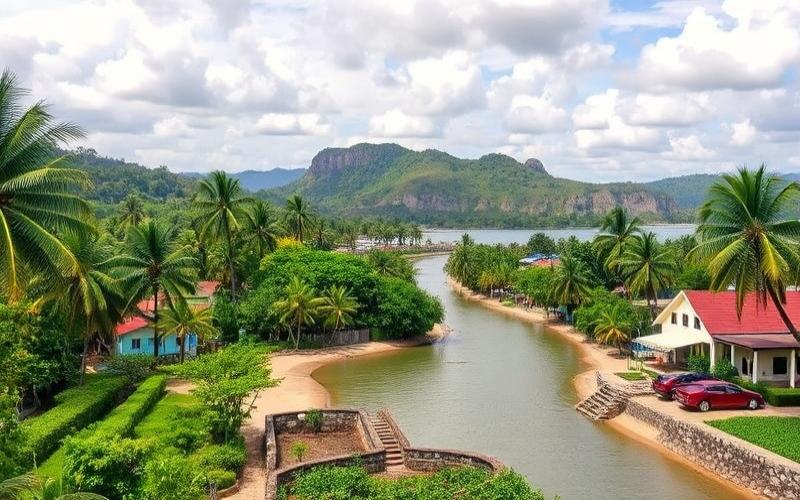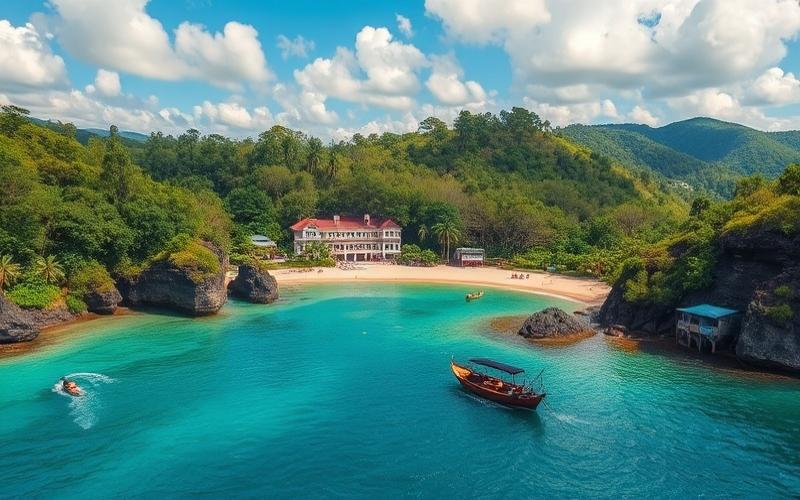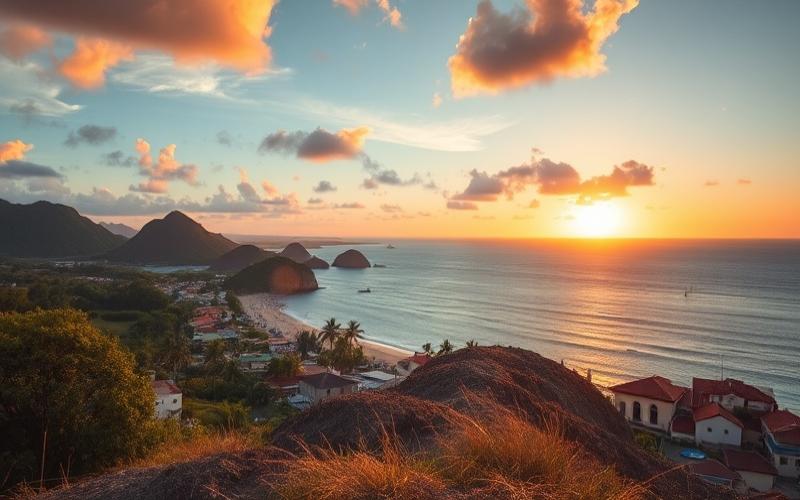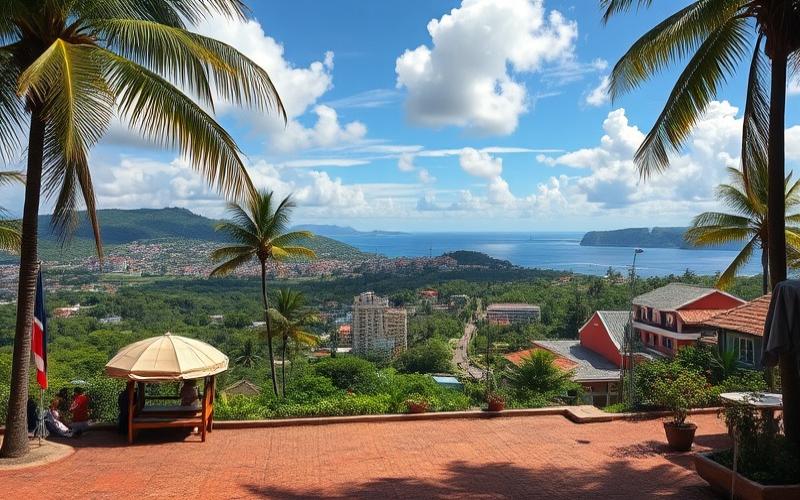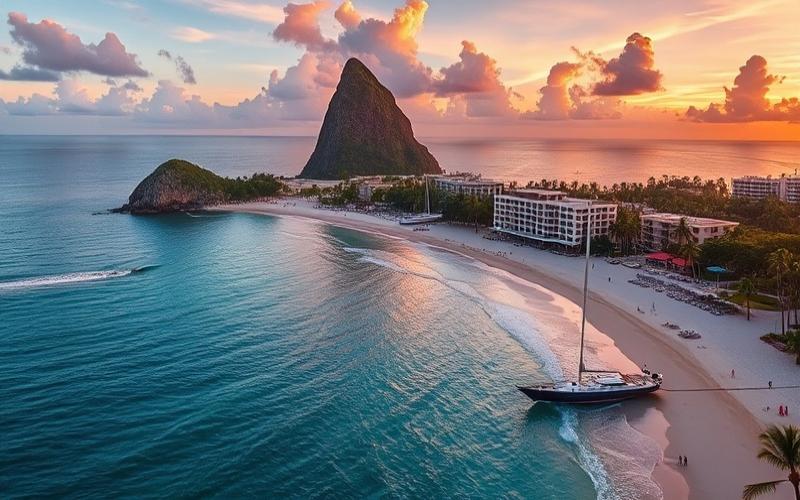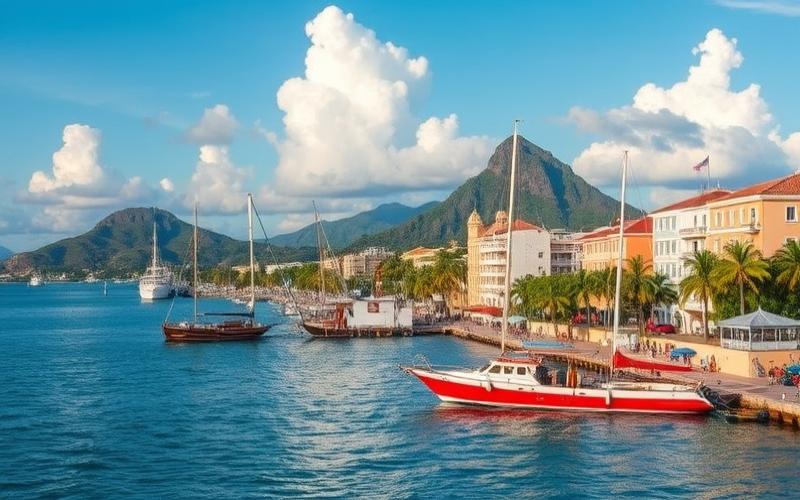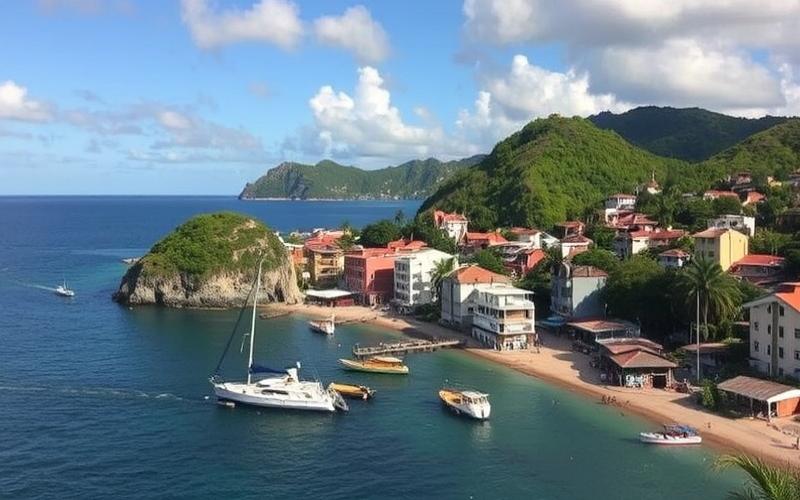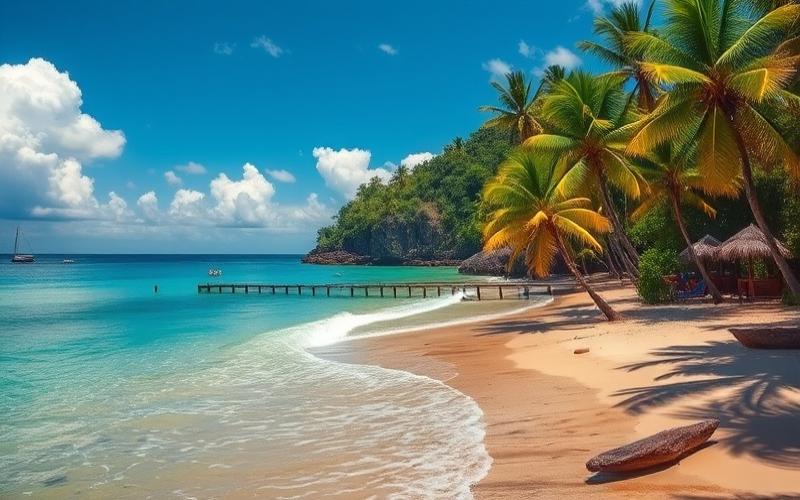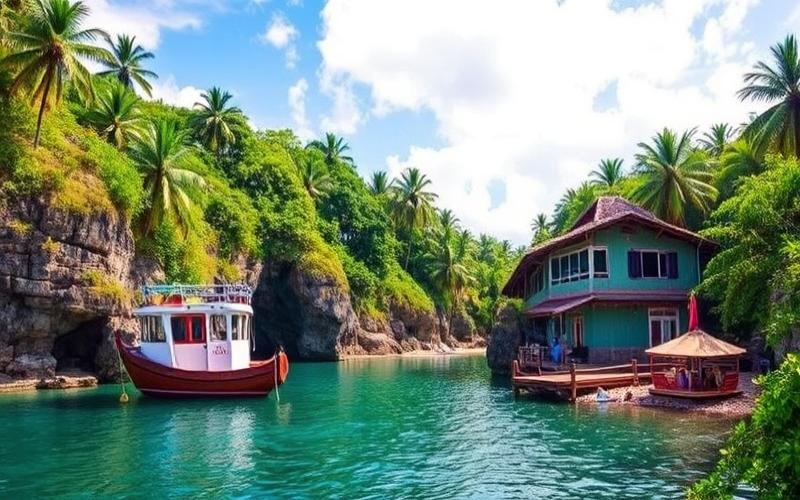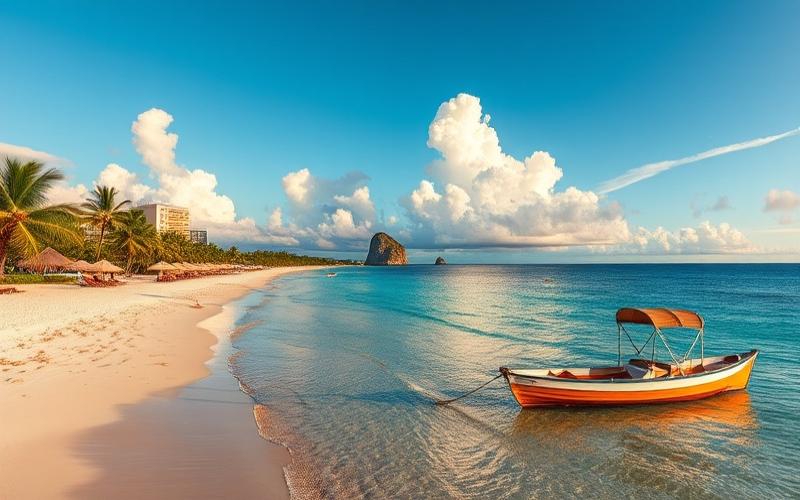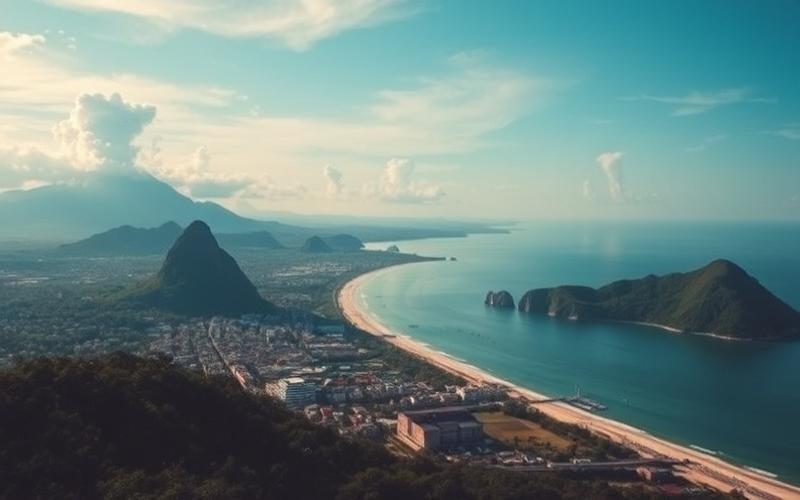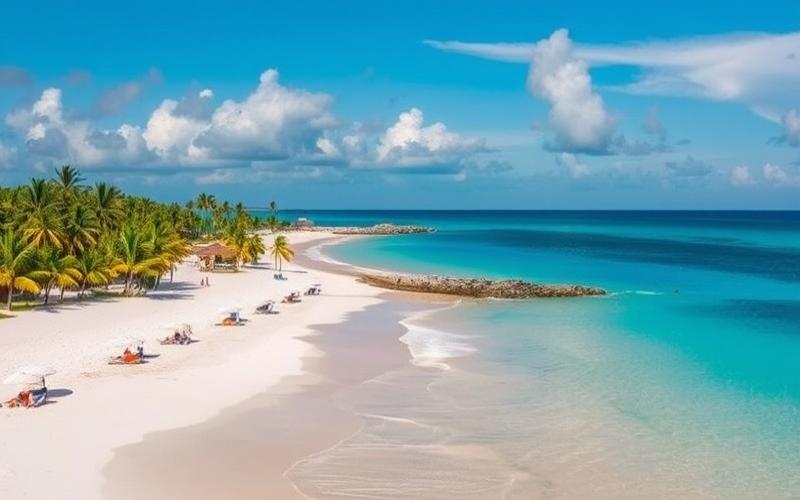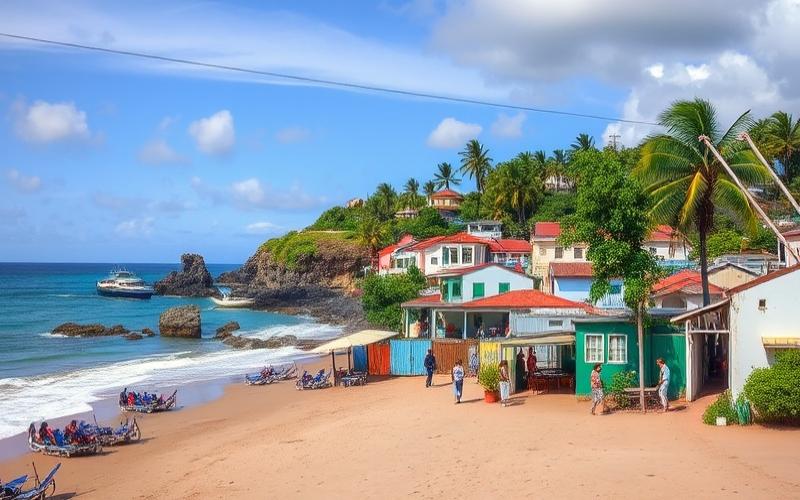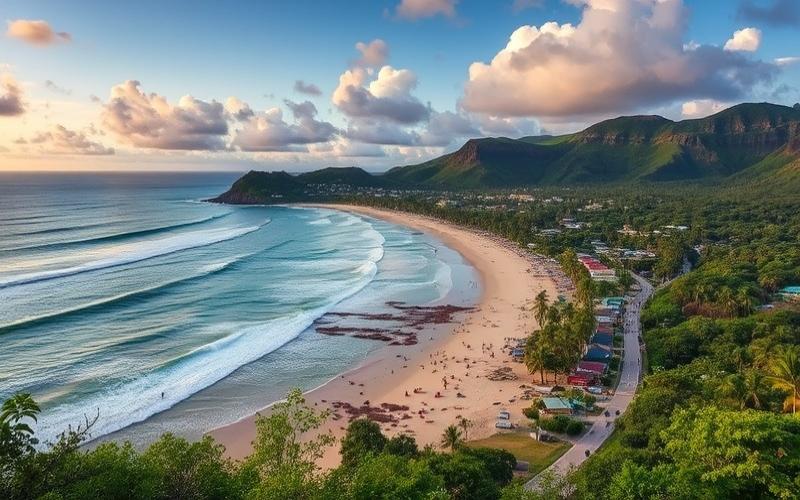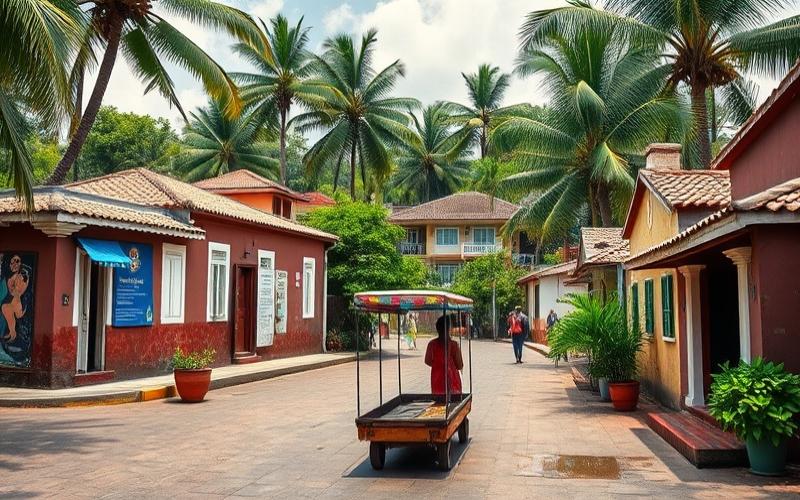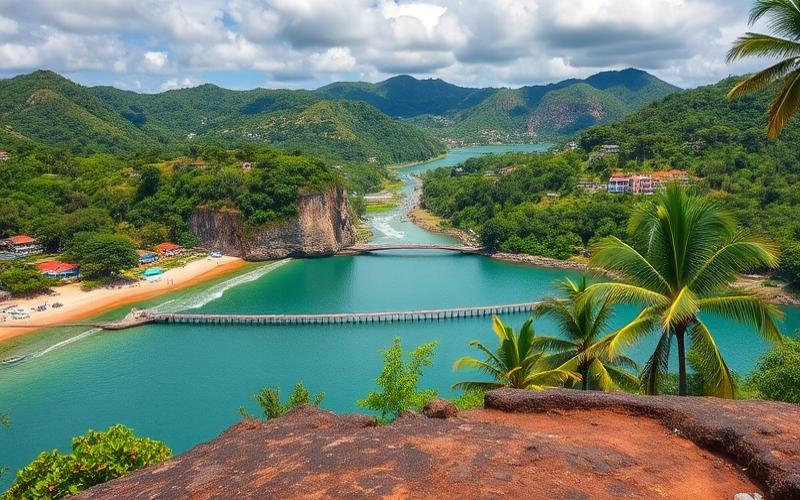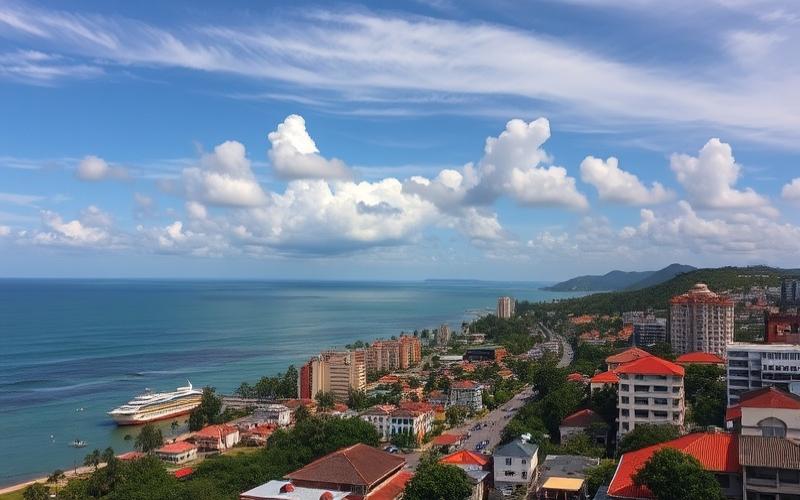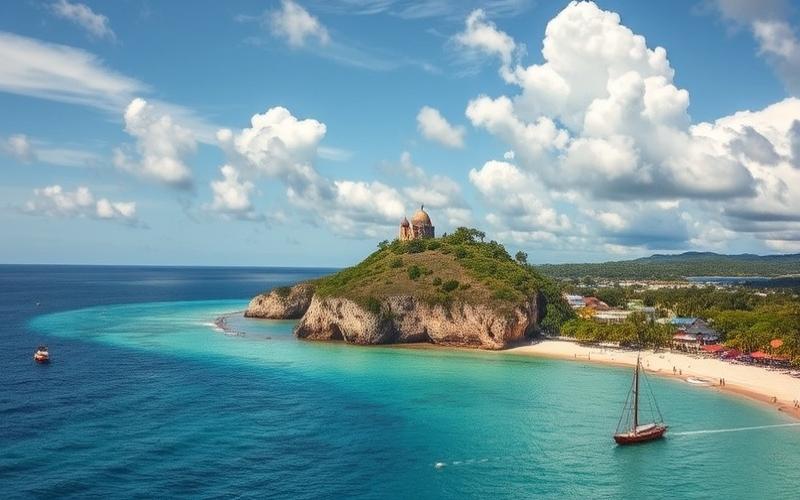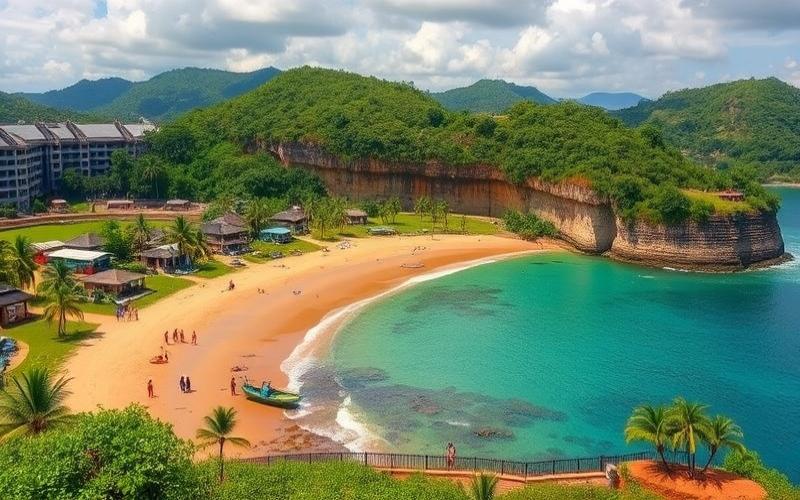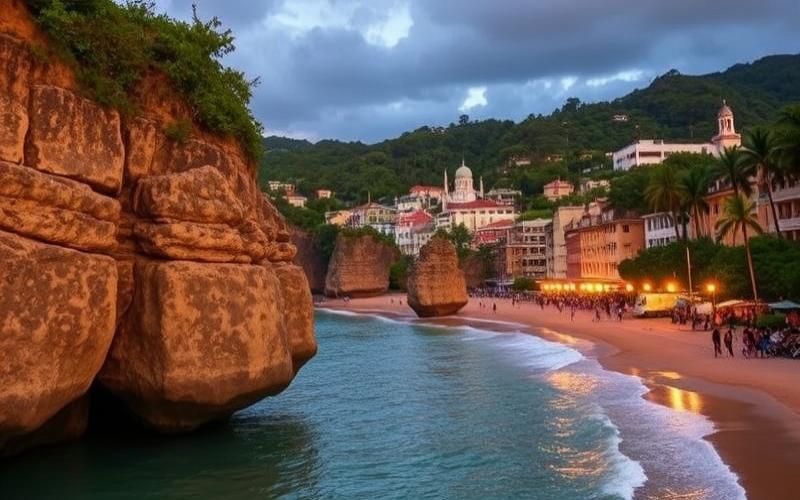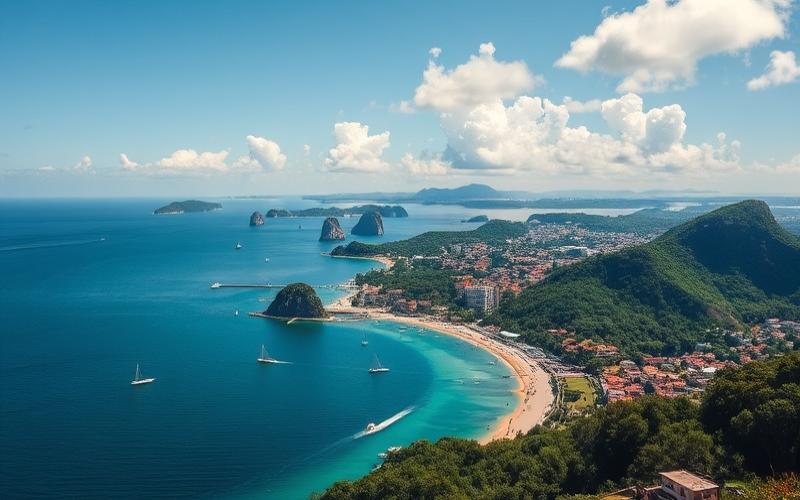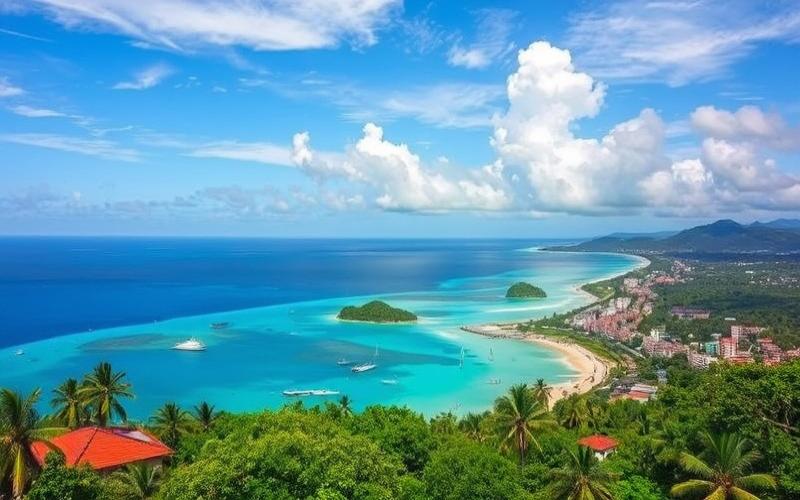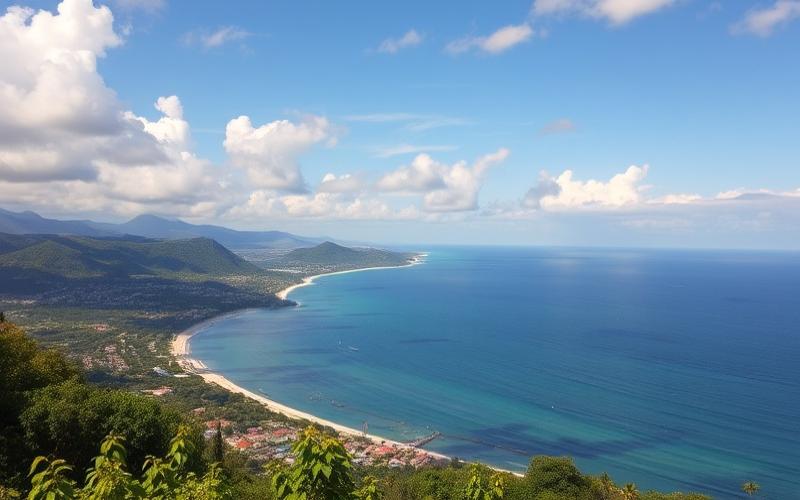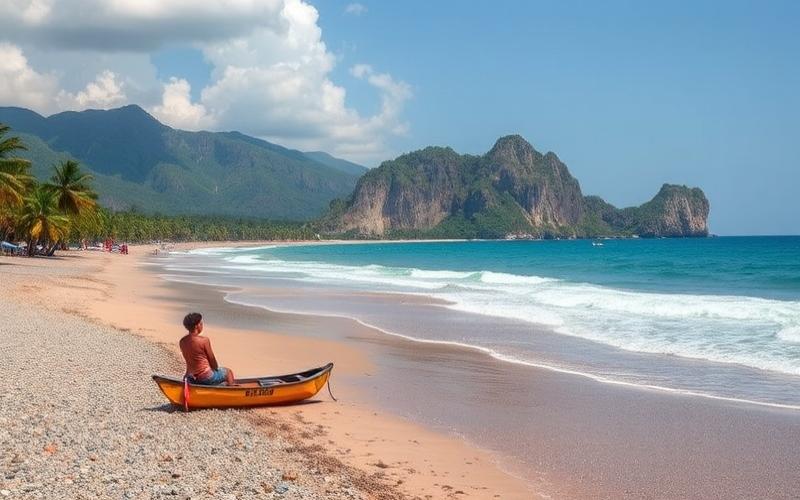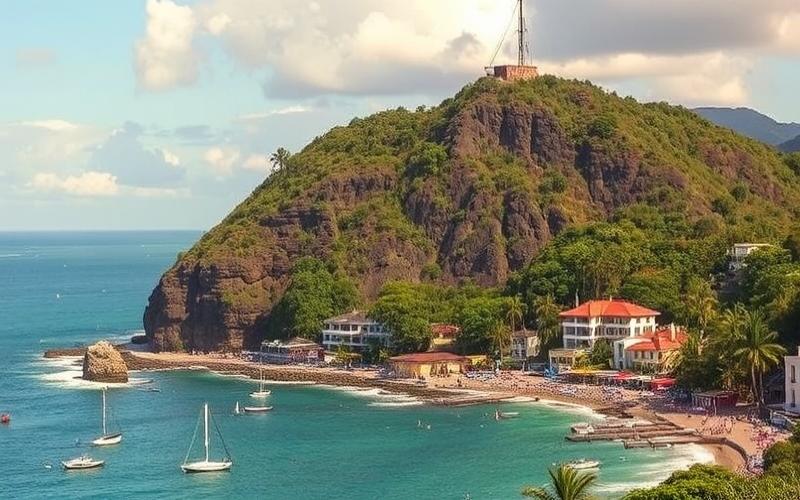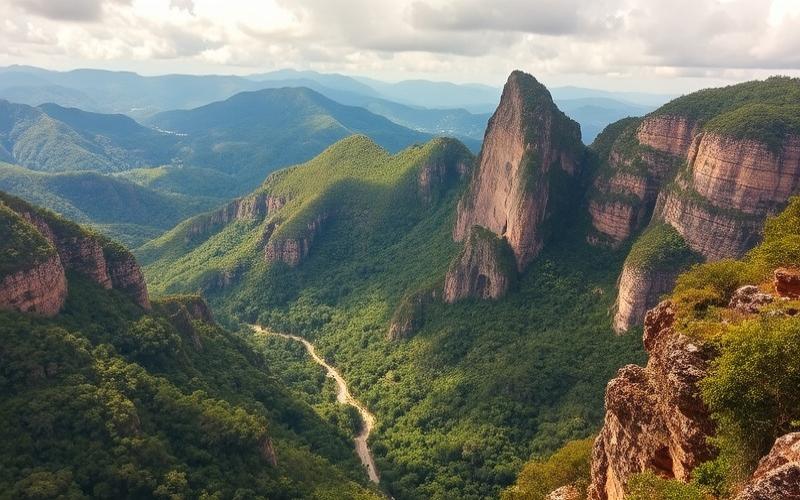
 Published on and written by Cyril Jarnias
Published on and written by Cyril Jarnias
Dominican Republic’s Artist Villages
Tucked away in the heart of a tropical island washed by Caribbean Sea waves, the Dominican Republic’s artist villages emerge as a fascinating microcosm where art and culture flourish. These creative havens, often supported by local and international initiatives, don’t just provide a stage for artistic expression; they also raise the crucial question of their economic and social impact.
Balancing Art and Profitability
Indeed, while some see these villages as a genuine cultural investment capable of energizing surrounding communities, others question whether they represent a viable financial opportunity for investors and the artists themselves. This article explores how these artistic enclaves manage to juggle these dualities, blending passion for art with a quest for economic profitability.
Good to Know:
Artist villages in the Dominican Republic are often supported by cultural development programs aimed at promoting local tourism and the creative economy.
Artistic Communities in the Dominican Republic: A New Breath for Cultural Heritage
Artistic communities in the Dominican Republic play a key role in revitalizing local cultural heritage through initiatives that value both traditional and contemporary practices.
Initiatives for Heritage Preservation and Rediscovery:
- Organization of Caribbean cross-residencies promoting the sharing of artistic practices between neighboring countries, such as the project supported by UNESCO and The Art Center, encouraging contemporary creation while building on local traditions.
- Creation of spaces like Galería Bolós, blending contemporary art gallery, handmade furniture workshop, and local craft store; this venue exhibits over 200 works mixing Dominican and Haitian art, contributing to an unprecedented cross-border dynamic.
- Development of projects such as Kiskey’Art, focused on cultural exchanges between Haiti and the Dominican Republic with European financial support.
- Annual competitions like the one organized by ÀNI Art Academies Dominicana, highlighting community artistic expression.
Valued Artistic Practices:
Traditional practices: crafts (basket weaving, amber jewelry), local naive painting, music (bachata, merengue), folk dance linked to religious or civic festivities.
Contemporary forms: modern visual arts exhibited in urban galleries or at regional events; eco-friendly design using recycled materials; interdisciplinary performances.
Concrete Examples of Villages or Spaces Involved in Heritage Conservation:
| Village / Space | Preserved Practices | Initiatives Conducted |
| Galería Bolós (Santo Domingo) | Contemporary Art & Traditional Craft | Mixed Haitian-Dominican Exhibitions |
| Kiskey’Art Projects | Binational Cultural Exchanges | Collaborative Workshops Funded by EU |
| ÀNI Art Academies Dominicana | Visual Arts | Community Competitions |
Impact on the Local Population:
- Strong reinforcement of cultural identity through:
- Intergenerational transmission of skills;
- Active integration of youth via educational workshops;
- International recognition of island heritage.
- Economic development:
- Direct creation of local jobs related to crafts and cultural tourism;
- New opportunities for artists through sales at exhibitions or specialized markets;
- Tourism boost around artist villages or hybrid galleries.
Public/Private Institutional Role & Challenges Faced:
- Dominican public institutions mainly support through occasional grants for major national festivals or heritage events.
- Many international NGOs (e.g., UNESCO) and private patrons participate in sustainable funding of regional artistic networks.
- Challenges remain significant:
- Limited access to sustainable funding outside capital cities,
- Weak professional structuring beyond a few major hubs,
- Sometimes sharp social tensions around certain hybrid forms perceived as distorting traditions,
- Growing opportunities linked to increasing international interest in Caribbean fusion – potential leverage to increase cultural exports and strengthened intercultural exchanges.
Dominican artistic communities today constitute an essential engine not only for preserving but also actively renewing a living cultural heritage—giving rise to a pluralistic national identity based on innovation rooted in tradition.
Good to Know:
Artistic communities in the Dominican Republic play a crucial role in revitalizing cultural heritage by combining traditional and contemporary practices. Initiatives, such as those in the artist villages of Las Terrenas and Altos de Chavón, bring ancient craft techniques back to life while integrating modern art. These creative spaces serve not only for heritage conservation but also for artistic education of youth, thereby strengthening their cultural identity. The economic impact is also notable, with the rise of cultural tourism and the creation of local jobs. Public and private institutions contribute through funding and logistical support, although challenges persist, particularly in terms of resources and international promotion. The commitment of these communities offers a unique opportunity for rediscovery and enhancement of Dominican cultural wealth.
Real Estate and Renovated Artist Farms: An Investment Opportunity
Renovated artist farms in the Dominican Republic’s artist villages offer a particularly attractive real estate investment opportunity, especially through the transformation of traditional buildings into appealing cultural spaces for investors.
- Acquisition costs for rural properties remain significantly lower than in urban or coastal areas, allowing the purchase of large areas for a moderate budget.
- Available vast lands are conducive to mixed projects: sustainable agriculture, eco-tourism and especially conversion into art galleries, creative workshops, or artist residencies.
- Local cultural wealth (crafts, colonial architecture, traditional festivals) attracts audiences eager for authentic experiences and enhances these places as cultural tourism hubs.
| Rural Asset | Real Estate Opportunity |
|---|---|
| Spacious Land | Creation of Galleries/Artistic Spaces |
| Low Density | Privacy for Cultural Residencies |
| Living Culture | Tourism and Event Enhancement |
Why Do These Properties Represent a Strategic Investment?
- The Dominican rural real estate market combines financial accessibility and development potential; growing demand for experiential tourism increases the added value of farms converted into artistic spaces.
- These investments often benefit from local tax advantages as well as community support linked to respect for architectural and cultural heritage.
Economic and Social Impact on Local Communities:
- Revitalization of rural areas through new financial flows (private investors, foundations).
- Direct job creation: artisans, cultural guides, event staff.
- Progressive structuring of genuine creative hubs contributing to regional recognition while preserving traditions and local identity.
Recent Concrete Examples:
Farms located near Playa Buen Hombre or Navarrete have been acquired and partially or completely transformed into venues dedicated to artistic hosting; some combine high-end tourist accommodation with temporary exhibitions or permanent workshops.
- Success Achieved: notable increase in visitor numbers each cultural season; rise in price per square meter in the concerned sector.
- Observed Challenges: sometimes complex need to obtain permits related to land use change; delicate balance between infrastructure modernization and heritage preservation.
Summary List — Key Factors Attracting Investors to These Renovated Farms:
- High potential return on investment through seasonal rentals or regular organization of cultural events.
- Rapid real estate appreciation linked to the rise of artistic tourism.
- Direct contribution to local economic dynamism while strengthening the international appeal of Dominican territory.
These investments not only transform the real estate landscape but also catalyze a social renaissance around heritage values
Good to Know:
Renovated artist farms in the Dominican Republic’s artist villages are an attractive real estate investment opportunity, presenting profitability potential through their cultural appeal. By transforming traditional farms into artistic spaces or galleries, investors can benefit from a return on investment combining cultural interest and market excitement. The local real estate market shows a trend of strategic revitalization of these areas, where investment not only preserves heritage but also stimulates the local economy. For example, some converted farms have successfully attracted a flow of visitors, increasing the properties’ added value. However, challenges include maintaining the balance between tradition and modernization. Moreover, these investments have a positive impact on local artistic communities, fostering sustainable social and economic development.
Creative Eco-Villages: Pioneers of Artistic Sustainability
Creative eco-villages in the Dominican Republic embody a dynamic fusion between environmental sustainability and artistic expression, acting as living laboratories for social, ecological, and cultural innovation.
Innovative Sustainable Construction and Management Methods
- Use of local and natural materials (bamboo, stone, recycled wood) to limit carbon footprint.
- Integration of green roofs, rainwater harvesting systems, and renewable energy (solar, hydro).
- Permaculture and agroforestry practices to create self-sufficient “food forests.”
- Ecological wastewater treatment (phytoremediation).
- Shared spaces dedicated to artistic creation: open workshops, natural amphitheaters, ephemeral galleries.
Promotion of Circular Economy and Resilient Community Life
- Pooling of tools, resources, and knowledge (object libraries, collaborative workshops).
- Waste valorization through composting, upcycling, and creating artworks from recovered materials.
- Local exchange systems (LES) and complementary currencies to encourage exchanges without relying on conventional circuits.
- Organization of cultural events (festivals, artist residencies, craft markets) strengthening social bonds and skill transmission.
| Sustainable Practice | Artistic and Community Impact |
|---|---|
| Eco Construction | Craft Workshops and Collective Murals |
| Green Energy | Night Events (Projections, Performances) |
| Organic Farming | Shared Kitchens, Creative Banquets |
| Shared Management | Artist Residencies and International Exchanges |
Impact on Local Development
- Talent Attraction: Eco-villages host local and international creators seeking places of inspiration and collective experimentation.
- Responsible Tourism: Promotion of immersive tourism focused on discovering traditions, biodiversity, and crafts, away from mass tourism.
- Ecological Awareness: Workshops, guided tours, and educational activities for residents and visitors (children, families, students).
Concrete Examples in the Dominican Republic
- Tubagua Plantation Eco Village: Located on a scenic route connecting northern beaches and mountains, this village offers eco-designed accommodations, community and artistic activities, and supports local educational and agricultural initiatives.
- Eco Village Banana Ranch (Higuey): Brings together several ecological villages around valorizing natural resources and crafts, with spaces for hosting artists and collective creation.
- Rancho Platon: Eco-lodge in the jungle, using biodegradable water systems, natural pools, and hosting artists for environmental and cultural projects.
Challenges Faced
- Limited access to funding for unconventional projects.
- Pressure from mass tourism and urbanization on local resources.
- Difficulties in maintaining balance between public openness and preservation of cultural authenticity.
Achieved Successes
- Creation of local jobs and valorization of traditional skills.
- Strengthening of community belonging.
- International recognition through hosting artists and dissemination of unique cultural events.
Replication and Investment Potential
Dominican artist eco-villages can inspire other regions as they demonstrate that it’s possible to attract investors and talent without sacrificing cultural authenticity or local biodiversity. Their model is based on:
- Co-creation between residents, artists, and external partners.
- Strong territorial anchoring, respectful of local identities and heritage.
- A circular, resilient, and innovative economy that attracts quality tourism and responsible project leaders.
⎯⎯⎯⎯⎯⎯⎯⎯⎯⎯⎯⎯
Dominican creative eco-villages pave the way for a new form of rural development, where art, nature, and community mutually reinforce each other to build a sustainable and inspiring future.
⎯⎯⎯⎯⎯⎯⎯⎯⎯⎯⎯⎯
Good to Know:
In the Dominican Republic, creative eco-villages such as Tubagua Eco Lodge and Altos de Chavón ingeniously fuse environmental sustainability and artistic expression to establish a circular economy and resilient community. These initiatives adopt eco-friendly construction methods, such as using locally sourced recycled materials, and promote responsible tourism through ecology awareness workshops. By attracting both artistic talent and conscientious visitors, these projects generate considerable impact on local development while preserving cultural heritage. Despite financial and logistical challenges, these villages have become reference models that can inspire other regions. They demonstrate that investment in artistic sustainability is not only possible but also advantageous, by strengthening the cultural authenticity and environmental integrity of the Dominican Republic.
Disclaimer: The information provided on this website is for informational purposes only and does not constitute financial, legal, or professional advice. We encourage you to consult qualified experts before making any investment, real estate, or expatriation decisions. Although we strive to maintain up-to-date and accurate information, we do not guarantee the completeness, accuracy, or timeliness of the proposed content. As investment and expatriation involve risks, we disclaim any liability for potential losses or damages arising from the use of this site. Your use of this site confirms your acceptance of these terms and your understanding of the associated risks.

